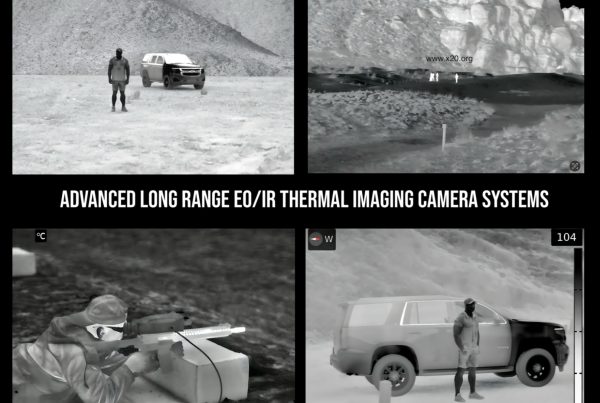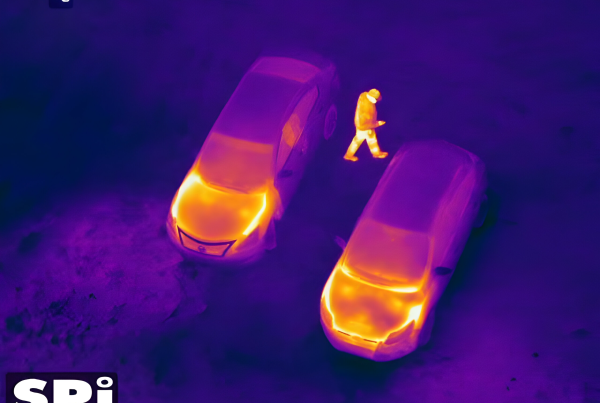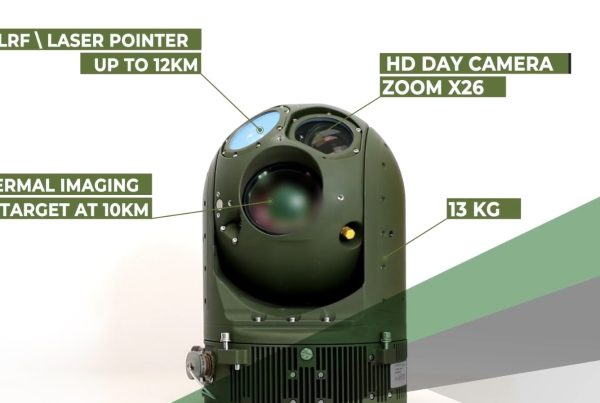Thermal security camera resources
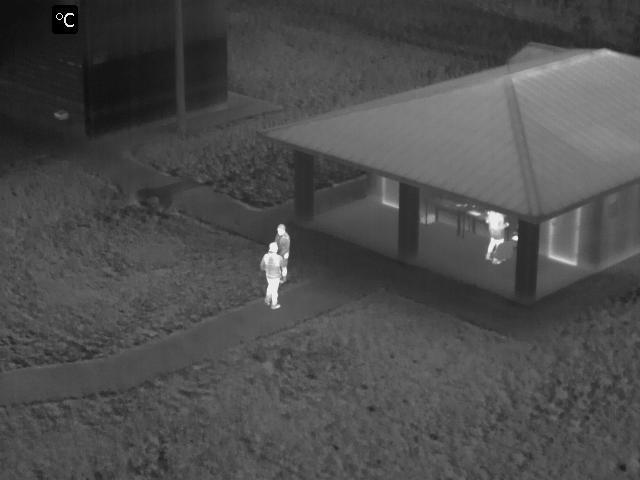
When you need reliable 24/7 detection with a low rate of false alarms, Thermal security cameras Aka FLIR security cameras are the obvious choice. They not only outperform standard cctv ccd cameras in dark scenes – they detect people, objects and incidents 24 hours a day, seven days a week, everywhere from pitch dark areas to sunlit parking lots. They are also less sensitive to different light conditions, such as shadows, backlight, darkness and even camouflaged objects. Thermal security cameras just keep on performing Especially in pitch darkness, even in difficult weather conditions, such as smoke, haze, dust and light fog. As they do not need floodlights, they also reduce light pollution and lower energy consumption.
SinceThermal security cameras can detect very small differences in temperature, it is hard for a human to blend with the background. Therefore,Thermal security cameras are excellent at detecting humans obscured by complex backgrounds or hidden in deep shadows. In addition, objects such as vehicles also have a different temperature than the surrounding environment, making detection easy.
Click here for an assortment of long range
thermal security cameras
Thermal security cameras can be used in a wide range of security applications, such as perimeter protection around industrial sites, airports and power plants. Their detection capabilities also make them a valuable tool, for example, in search and rescue operations.
As an example, live video from a Thermal security camera can inform the user about a person walking among the cars in a parking lot long before a visual camera has detected the movement. When it comes to identification, it is possible to useThermal security cameras in situations where privacy is an issue, such as at schools. It should be not that in many countries, the user must have permission from the authorities to record video in public areas. However, in general it is easier to get permission for thermal cameras, as people in the scene cannot be identified.
Compared to visual cameras, Thermal security cameras can provide more reliable detection and shape recognition by combining high image contrast with motion detection. This results in fewer false alarms and reduces unnecessary responses and actions by personnel. The cameras also add thermal imaging information to the image, making it possible to monitor processes and detect abnormal behavior when temperatures change, for example, to find heat leaks in buildings or determine whether a car has been driven within a recent period.
In addition to all this, a Thermal security camera is a reliable platform for integrating video analytics applications.
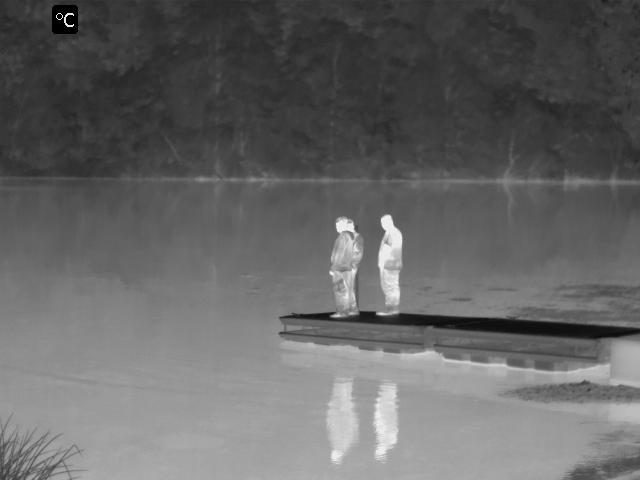
The resolution required to detect an object is stated in pixels and determined by means of Johnson’s criteria. John Johnson, a US military scientist, developed this method for predicting the performance of sensor systems during the 1950’s. An object can be a person, typically defined with a critical width of 0.75 m (2.46 ft) or a vehicle, typically defined with a critical length of 2.3 m (7.55 ft). Johnson measured the ability of observers to identify scale model targets under various conditions, and came up with criteria for the minimum required resolution. These criteria provide a 50% probability of an observer distinguishing an object at the specified level. For a thermal sensor, the temperature difference between the object and its background needs to be at least 2 °C (3.6 °F) according to Johnson’s criteria. The levels of Johnson’s criteria used for Axis thermal network cameras are as follows:
At least 1.5 pixels are needed for detection, that is, the observer can see that an object is present.
> At least 6 pixels are needed for recognition, that is, the observer can distinguish the object, for example, a person in front of a fence.
> At least 12 pixels are needed for identification, that is, the observer can distinguish an object and object characteristics, for example, a person holding a crowbar in his hand.
Johnson’s criteria were developed under the assumption that visible information was processed by a human observer. If the information instead is processed by an application algorithm, there will be specific requirements on the number of pixels needed on the target for reliable operation. All video analytics software algorithms need to work with a certain number of pixels, however the exact number may vary. Even if a human observer would be able to detect the object, the application algorithm often needs a larger amount of pixels at a given detection range to work properly. To find out the necessary number of pixels at a given range
Thermal security cameras are well suited for perimeter and area protection, such as virtual fences, providing discreet and cost-effective detection, as well as enhancing building security and emergency management. The built-in intelligence of the camera, together with added video analytics, creates a solution where the video surveillance system automatically performs an analysis of the captured video. Thermal network cameras help distribute this analysis to other cameras in the IP system, leading to improved efficiency and scalability.
Together, Axis’ thermal and visual network cameras expand the video analytic capabilities of existing video surveillance systems, for example, in perimeter protection. Figure 1 shows a setup thermal protection system. Axis’ perimeter protection solutions are based on thermal cameras with built-in video analytics software. Using video analytics, a thermal security camera can automatically trigger an alert when a person enters a predefined area within the camera’s field-of-view, and at the same time trigger a pan/tilt/zoom PTZ camera to supply video to the operator. This makes it possible to acknowledge suspect activity already before intrusion, and to visually what is going on before taking relevant action. It is essential to remember that Johnson criteria are valid only in ideal conditions. The weather condition on site will affect the detection range for both humans, visual cameras, and thermal cameras. The detection range of a thermal Imaging flir security camera is usually less influenced by the weather, for example, during a misty day, than the range of a visual camera, The detection range used in the nomograph above ideally requires a temperature difference of 2°C (3.6 °F) between the targeted object and the background. Even though weather conditions can have a negative effect on the thermal image by leveling out temperature differences, a thermal Security camera produces excellent results when detecting intruders such as humans or vehicles. Advanced image processing such as local contrast enhancement helps the camera distinguish objects, for example humans, from the background even when the temperature difference is very small.
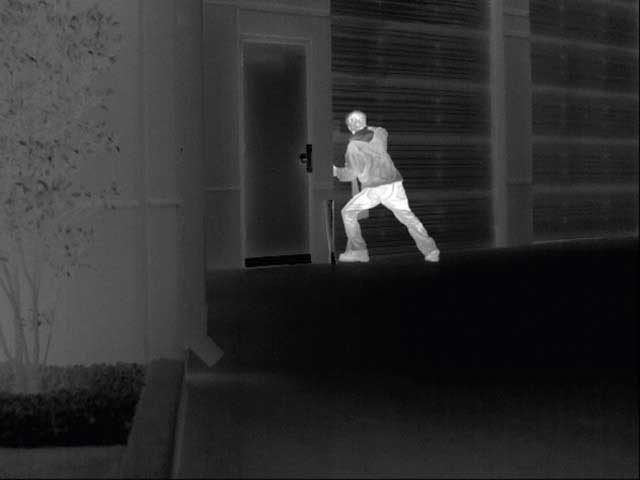
The two most important environmental factors that affect the image of an object in the thermal security camera are absorption and scattering. They reduce the thermal radiation that reaches the camera, thereby reducing the distance at which the camera can detect an object. Scattering has a greater effect on the loss of thermal energy than absorption.
The detection range used in the nomograph above ideally requires a temperature difference of 2°C (3.6 °F) between the targeted object and the background. Even though weather conditions can have a negative effect on the thermal image by leveling out temperature differences, a thermal Security camera produces excellent results when detecting intruders such as humans or vehicles. Advanced image processing such as local contrast enhancement helps the camera distinguish objects, for example humans, from the background even when the temperature difference is very small.
The two most important environmental factors that affect the image of an object in the camera are absorption and scattering. They reduce the thermal radiation that reaches the camera, thereby reducing the distance at which the camera can detect an object. Scattering has a greater effect on the loss of thermal energy than absorption.
thermal security cameras work primarily in the Long-wavelength infrared (LWIR) wavelength range. In general, the transmission of LWIR (7-14 microns) wavelengths is considerably better in conditions with airborne particles, such as fog and smoke, compared to visible wavelengths. In most cases, the ‘short’ visible wavelengths are absorbed and scattered by the particles to a higher degree than the LWIR wavelengths. This decreases the detection range of the visual cameras compared to the thermal ones, as can be seen in Classes I and II in Table 1. In Class III, thE fog is dense enough that even the LWIR wavelengths are absorbed and scattered. In this condition, the difference between visual and thermal cameras is almost Non existent.
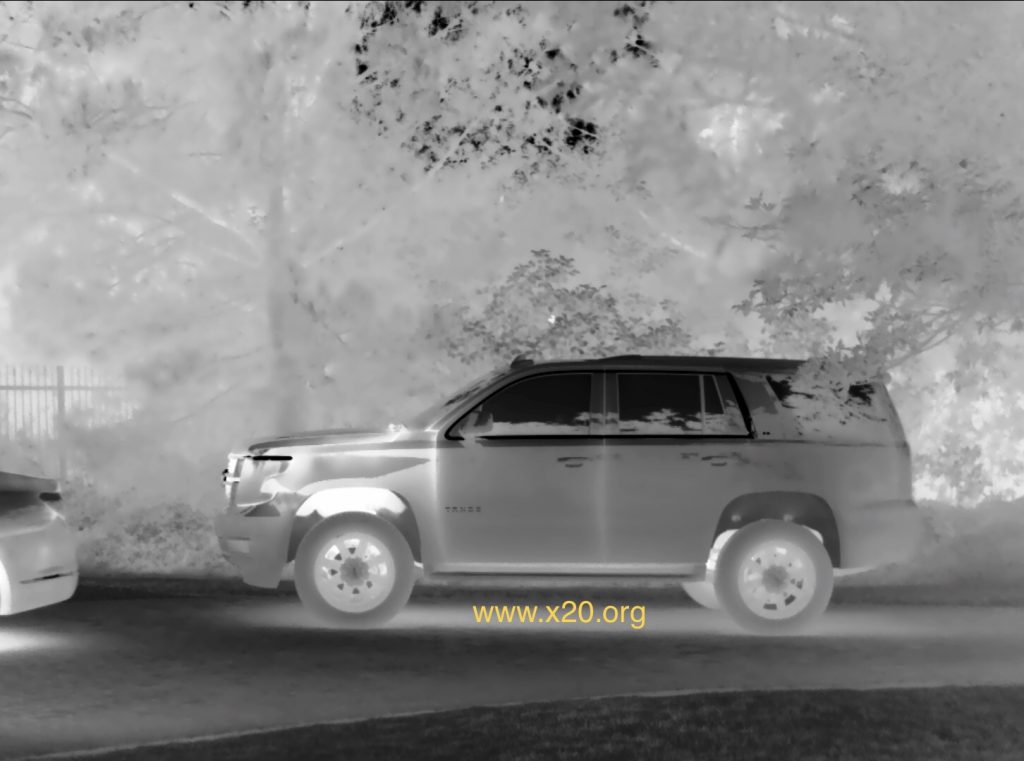 Even though raindrops are larger than fog droplets, their concentration is lower. This means that rain does not scatter thermal radiation as much as fog does. The level of scattering during snow is somewhere in between the range of fog and rain. Sleet or wet snow has a scattering level more similar to rain, whereas dry snow is more similar to fog. Table 2 gives examples of approximate attenuations in different weather conditions.
Even though raindrops are larger than fog droplets, their concentration is lower. This means that rain does not scatter thermal radiation as much as fog does. The level of scattering during snow is somewhere in between the range of fog and rain. Sleet or wet snow has a scattering level more similar to rain, whereas dry snow is more similar to fog. Table 2 gives examples of approximate attenuations in different weather conditions.
For example, a thermal security camera with a 60 mm lens will be 10 dB/km or 1 dB/100 m, giving in an attenuation of 3 dB in total. The 3 dB attenuation means that only 50% of the emitted energy from the object will reach the thermal sensor, resulting in a lower input signal. A lower input signal will give a noisier image, since the signal-to-noise ratio decreases. To some extent, image processing will compensate for this, but the image will still contain less information and therefore look flatter. Its contrast will be lower which will make it more difficult for the user to distinguish between, for example, foliage and flat surfaces in the image background. Signal attenuation will degrade camera performance and the reliability of integrated video analytics applications.
Therefore, installations where one single camera is working close to its maximum performance should be avoided. A better option is to use several thermal security cameras to cover the given distance. This will safeguard reliable operation by meeting the required amount of pixels on target and also ensure that the emitted energy from the object is sufficient.
Rain and wet snow not only scatter radiation, but also level out temperature differences in the image background. A level background temperature results in decreased background contrast for a thermal camera. While scattering means that less energy reaches the camera sensor, the levelled out background temperature does not influence the sensor. However, since the contrast of the image will be lower, it will be more difficult to distinguish details in the background and the Thermal security camera image will look flatter. It will still be easier for a thermal camera to detect a person, since the contrast between the warm person and the cold background will be higher, When installing a thermal network camera, there are some things to consider. To achieve the best results when detecting people, the temperature of the background of the monitored object should be as even as possible, and it should be colder or warmer than a typical person or intruder that may appear in the scene. This way an intruder will stand out from the background.
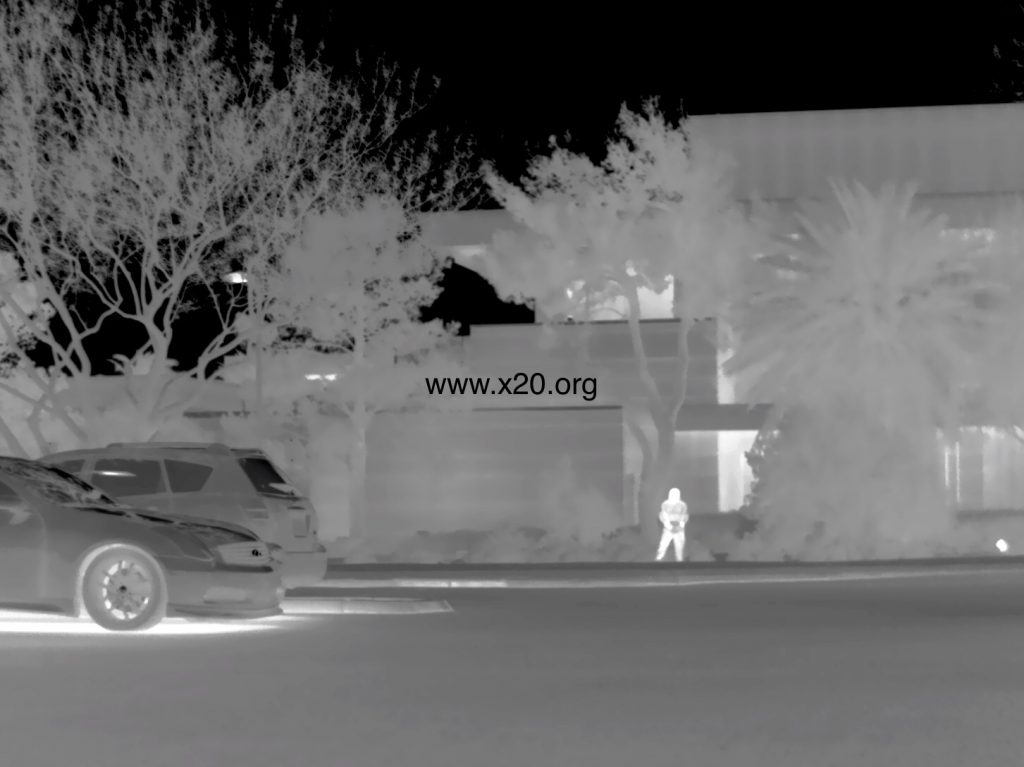
There should be a free line of sight from the camera to the region of interest, without anything disturbing or blocking the view. The scene should have one or a few easy recognizable objects, for example, a chimney against the sky or a building. A chimney in use will be warm, and a building is almost always leaking some indoor heat.
Make sure that the scene does not contain any tree branches, flags or similar that move in to and out of the scene when it is windy. The camera should be mounted as firmly as possible, and clear and sharp edges should be kept at a distance from the intended scene. A sharp edge just outside the scene may trigger a false motion alarm if the camera sways in the wind and moves the viewed scene over the edge. Since the camera is moving, it will interpret the changed image as movement in the scene, even though nothing but the camera has actually moved. Weather conditions constitute another factor that will affect the performance of the installation. Even though the number of pixels meets the requirements, the temperature difference between the background and the object must be large enough to reassure reliable application operation.
Thermal security cameras make sure that objects, people, and incidents are detected 24 hours a day, seven days a week. Together with video analytics, thermal Security cameras help reduce the rate of false alarms and keep installation costs down since fewer cameras are needed to monitor the area. Although thermal cameras are somewhat more expensive than certain visual cameras, they are an affordable alternative when protecting highly valuable items or important premises.

